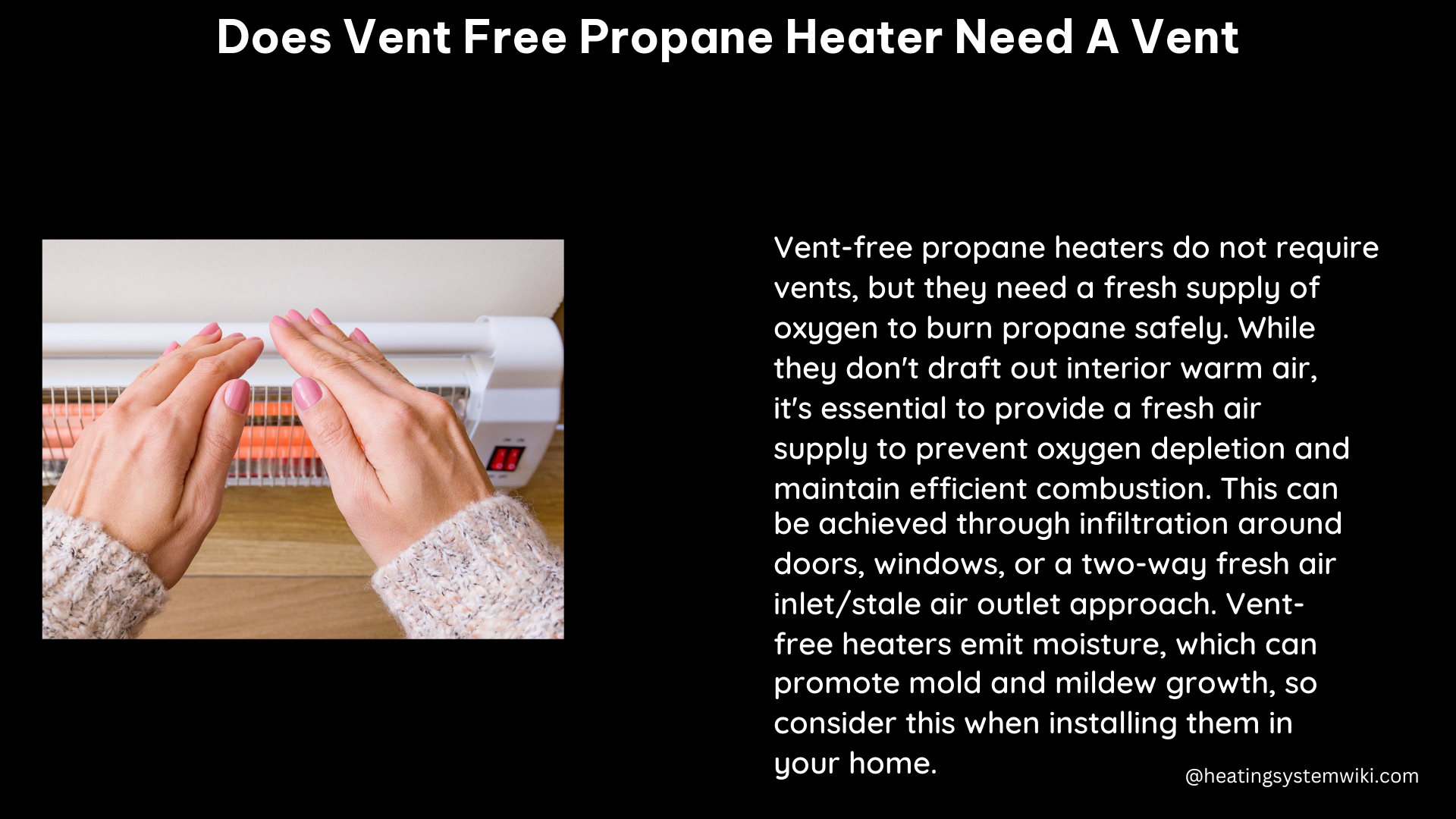Vent-free propane heaters are a popular choice for supplemental heating due to their convenience and cost-effectiveness. Unlike traditional vented heaters, these units do not require complex ductwork or ventilation systems for installation. However, the lack of a dedicated vent raises important considerations regarding safety, efficiency, and potential indoor air quality issues. In this comprehensive guide, we’ll delve into the nuances of vent-free propane heaters, exploring their features, benefits, and potential drawbacks to help you make an informed decision.
Understanding Vent-Free Propane Heaters
Vent-free propane heaters are designed to operate without the need for a dedicated vent or chimney. These heaters are typically fueled by propane gas and are classified into two main types: blue flame and infrared.
Blue Flame Vent-Free Propane Heaters
Blue flame vent-free propane heaters utilize a burner that produces a blue flame, which heats the surrounding air through convection. These heaters are known for their consistent temperature control and are well-suited for insulated spaces, as they efficiently warm the air within the room.
Infrared Vent-Free Propane Heaters
Infrared vent-free propane heaters, on the other hand, use gas to heat ceramic panels that radiate heat directly onto objects and people in the room. This targeted heating approach makes infrared heaters ideal for quickly warming up a specific area or person, rather than the entire room.
Advantages of Vent-Free Propane Heaters

The primary advantages of vent-free propane heaters include:
-
Convenience: Vent-free heaters do not require the installation of complex ductwork or venting systems, making them a more straightforward and cost-effective option compared to traditional vented heaters.
-
Efficiency: Vent-free heaters do not lose heat through a vent or chimney, resulting in higher energy efficiency and potentially lower heating costs.
-
Versatility: Vent-free heaters can be installed in a wider range of locations, as they do not require dedicated venting infrastructure.
-
Targeted Heating: Infrared vent-free heaters offer a focused heat source, making them well-suited for quickly warming up specific areas or individuals.
Potential Drawbacks and Considerations
While vent-free propane heaters offer several advantages, there are also important considerations to keep in mind:
Indoor Air Quality Concerns
Since vent-free heaters release exhaust directly into the indoor environment, they can contribute to increased moisture levels and the potential for mold growth. This is particularly problematic in bathrooms or other high-humidity areas.
Safety Considerations
Vent-free heaters require a fresh supply of outside air to operate safely and efficiently. Inadequate ventilation can lead to the buildup of harmful byproducts, such as carbon monoxide, which can pose serious health risks.
Regulatory Restrictions
Many local building codes and regulations prohibit the installation of vent-free heaters in bedrooms or other sleeping areas due to the potential for indoor air quality issues and safety concerns.
Maintenance and Cleaning
Vent-free heaters may require more frequent cleaning and maintenance to ensure optimal performance and safety. Proper maintenance is crucial to prevent the buildup of dust, debris, and potential blockages.
Ensuring Safe and Efficient Operation
To mitigate the potential drawbacks of vent-free propane heaters, it is essential to follow the manufacturer’s instructions and adhere to local building codes and regulations. Some key considerations include:
-
Ventilation: Provide a fresh supply of outside air to the heater, either through a two-way approach (e.g., using a bathroom fan for exhaust and infiltration around the door for intake) or by opening a window in the room where the heater is installed.
-
Placement: Avoid installing vent-free heaters in bathrooms, bedrooms, or other areas where people sleep, as these spaces are more susceptible to moisture buildup and potential safety concerns.
-
Maintenance: Regularly clean and maintain the heater according to the manufacturer’s recommendations to ensure optimal performance and safety.
-
Monitoring: Closely monitor the indoor air quality and be vigilant for any signs of excessive moisture, mold growth, or potential safety issues.
-
Compliance: Consult with local building authorities to ensure that the installation and use of a vent-free propane heater comply with all applicable codes and regulations.
Conclusion
Vent-free propane heaters offer a convenient and efficient heating solution, but their use requires careful consideration and adherence to safety protocols. By understanding the unique features, benefits, and potential drawbacks of these heaters, you can make an informed decision and ensure a safe and comfortable indoor environment. Remember to always prioritize safety, follow manufacturer instructions, and consult with local authorities to ensure compliance with relevant regulations.
References:
- LG Jordan Oil. (n.d.). Vented Vs. Vent-free Space Heaters. Retrieved from https://www.lgjordanoil.com/space-heaters/
- Fine Homebuilding. (2000-01-04). How to bring air to ventless heater. Retrieved from https://www.finehomebuilding.com/forum/how-to-bring-air-to-ventless-heater
- Williamsongas. (2020-02-03). Direct Vent vs. Vent-Free Space Heaters: Which Is Best? Retrieved from https://www.williamsongas.com/2020/02/03/space-heater-direct-vent-vs-vent-free/
